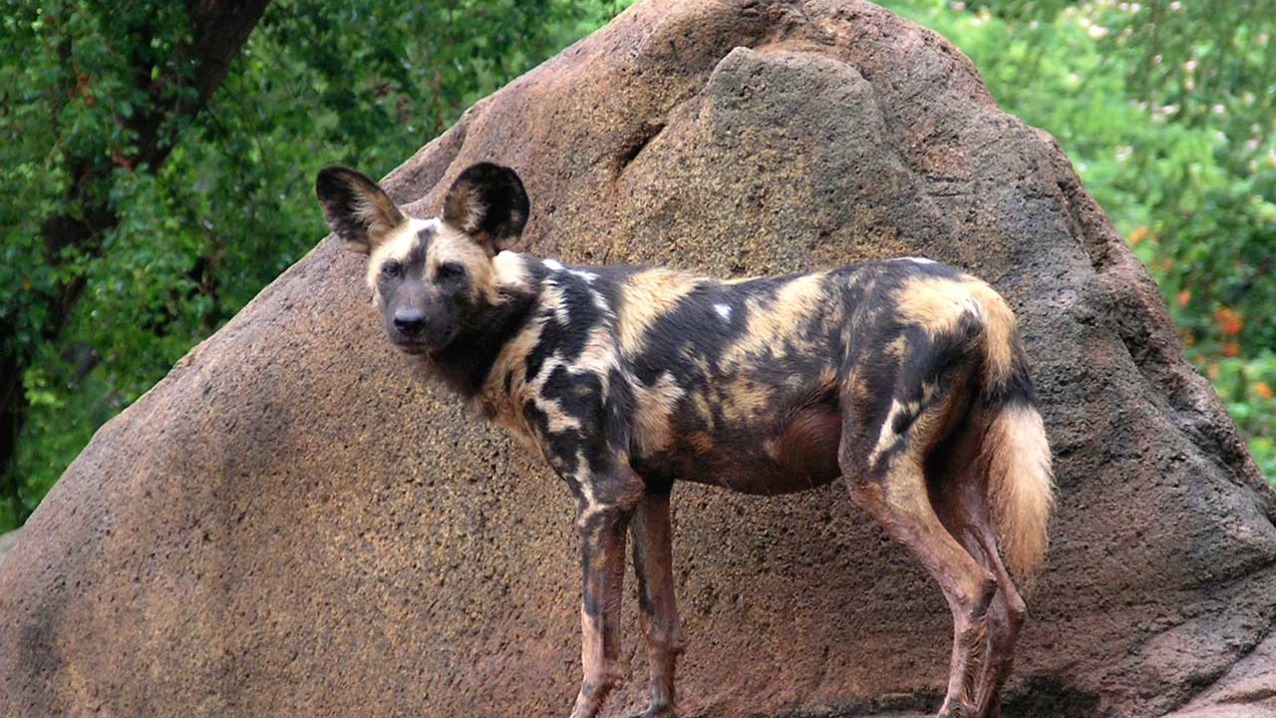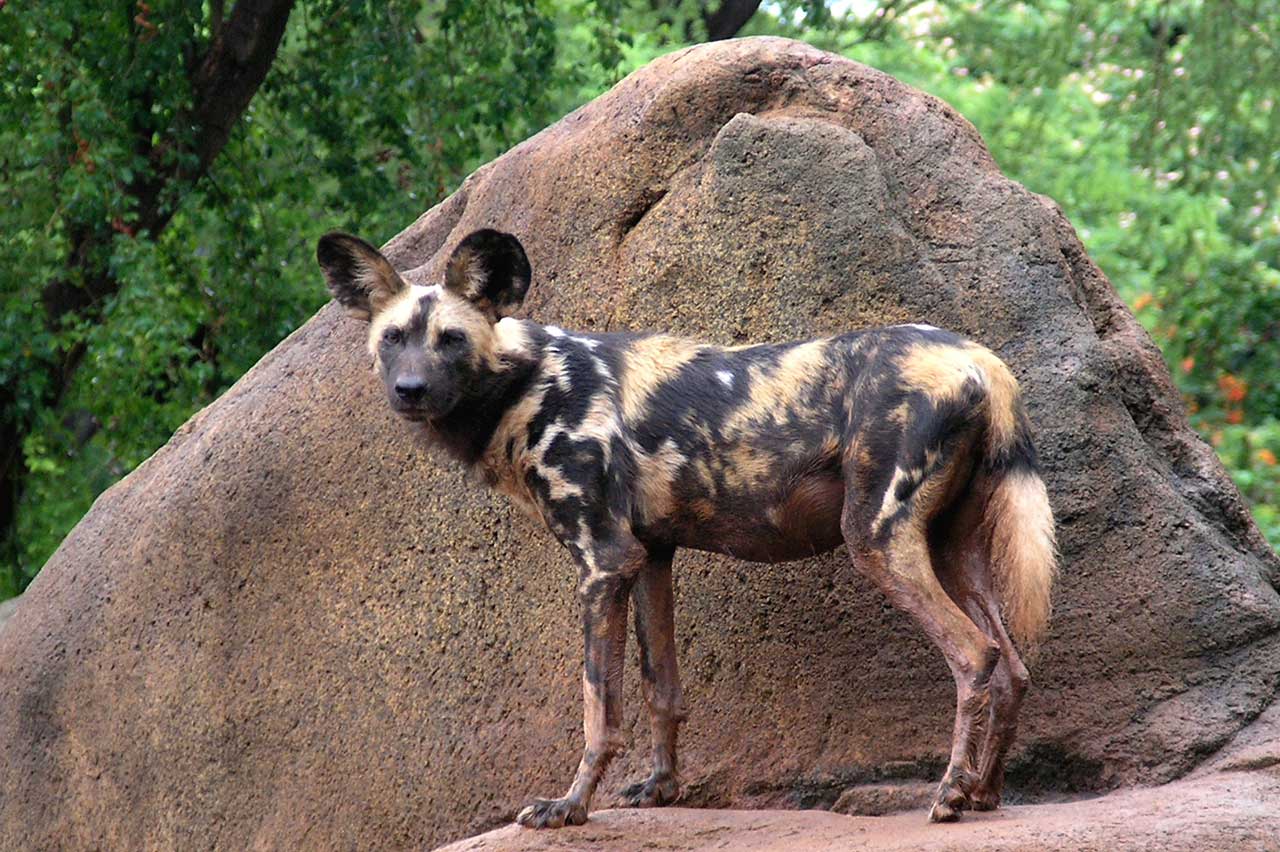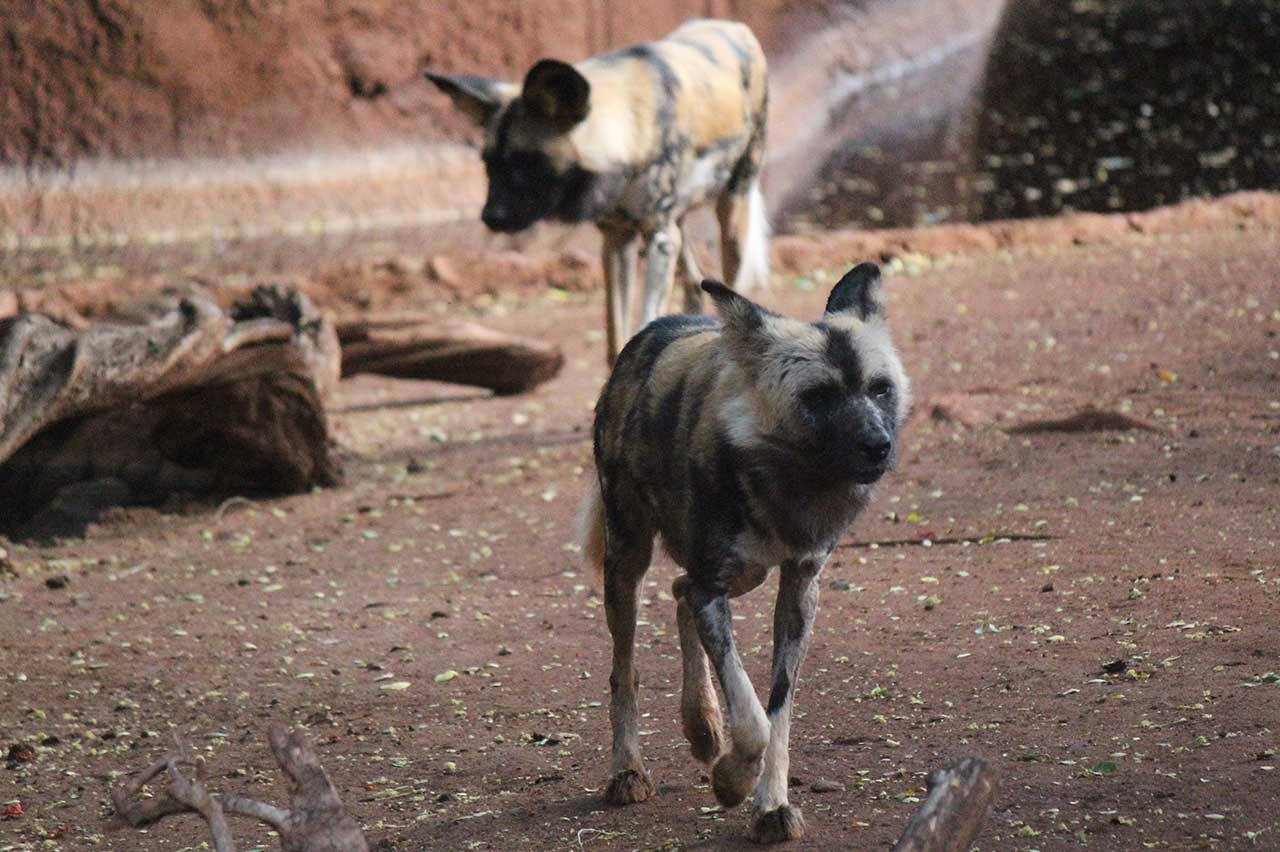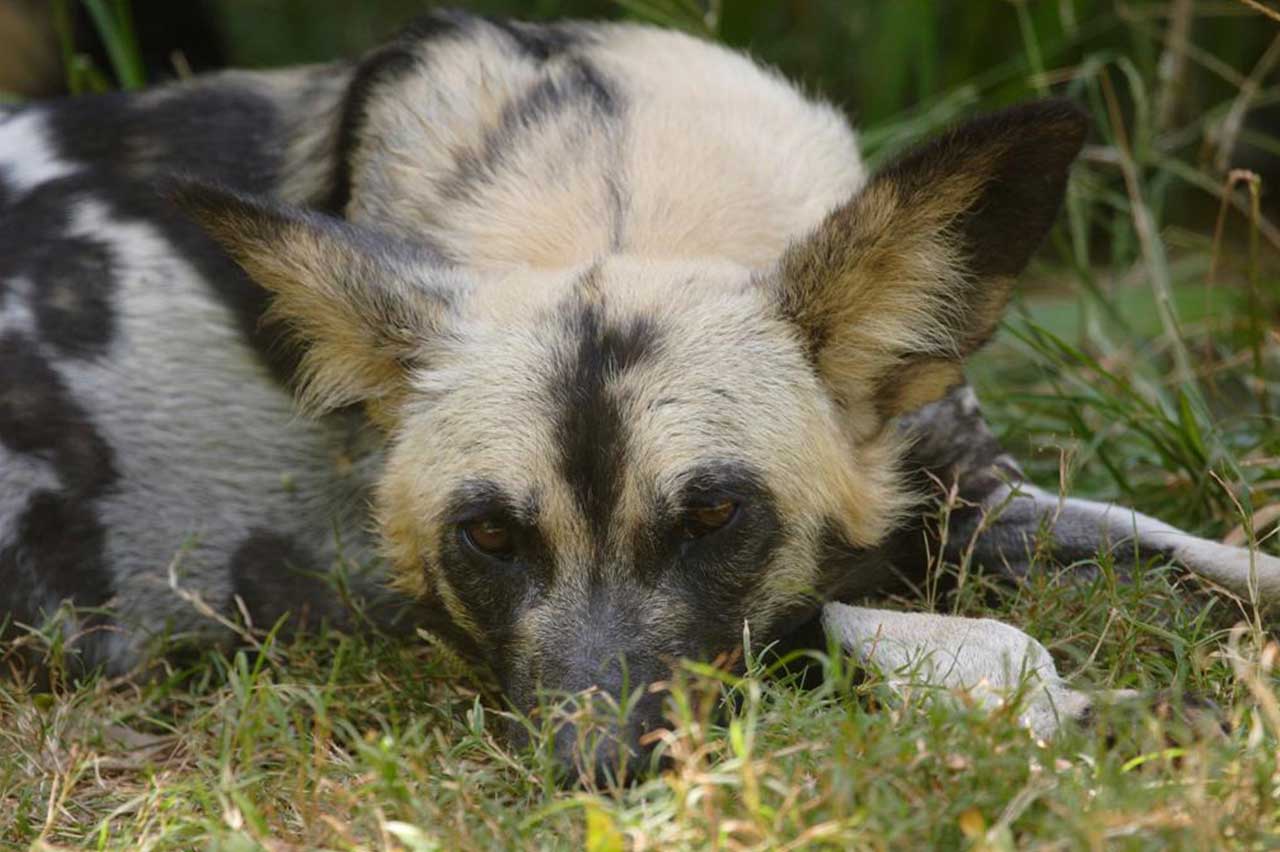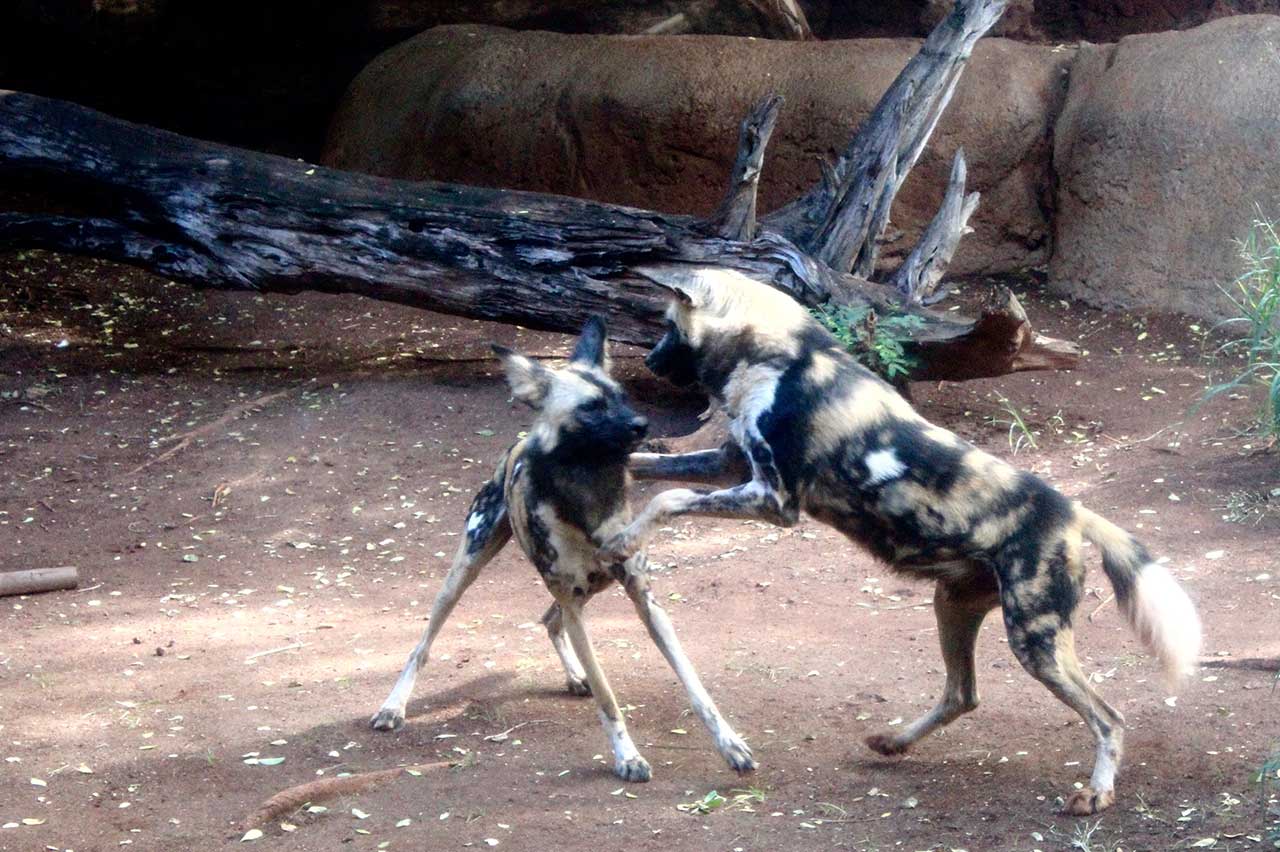lycaon pictus
African Wild dog
About Me
Scientific Name: Lycaon pictus
Description
African Wild Dogs are very social animals that live in packs of 5-20 individuals; rarely as many as 60. They fill the ecological role or niche of the wolf in Africa. No two dogs have identical coat patterns of white, black and tan; yet close relatives are recognizably similar in coloration. The body length is about 40 inches with a 12-16 inch tail. Animals weigh a maximum of 66 pounds. Males are slightly larger than females, and animals from Southern Africa are slightly larger than their northern relatives.
Fun Facts
- The scientific name for the African Wild dog means “painted wolf”. No two wild dogs have the same markings, which makes them easily identifiable as individuals.
- The entire African wild dog pack shares responsibility for protecting the cubs, with both males and females babysitting the young.
- Kingdom: Animalia
- Phylum: Chordata
- Class: Mammalia
- Order: Carnivora;/li>
These dogs are similar in size and shape to medium-large domestic dogs, but they are only distantly related to other canids. Their mottled coloring and large rounded ears make them unmistakable. The muzzle is black and the forehead has a black line in the middle of it. The large head resembles that of a hyena. Legs are long and slender. The feet have only four toes, and no dewclaws. The tail has a white plume at the tip
No two dogs have identical coat patterns of white, black and tan; yet close relatives are recognizably similar in coloration. The body length is about 40 inches with a 12-16 inch tail. Animals weigh a maximum of 66 pounds. Males are slightly larger than females, and animals from Southern Africa are slightly larger than their northern relatives.
African Wild Dogs are savanna inhabitants and their normal range is from south of the Sahara Desert except in forested areas.
African Wild Dogs are very social animals that live in packs of 5-20 individuals; rarely as many as 60. They fill the ecological role or niche of the wolf in Africa. One of the most efficient of all predators, they do not hesitate to attack small hares or large zebras. They specialize in preying on medium-sized antelope including Thomson’s gazelle, impala, kob, lechwe and springbok. This species does not hunt in relays but rather depends on endurance that is greater than their prey. They can run at about 35 m.p.h. for 3 miles or more.
They hunt mainly around dawn and dusk because they rely on sight when hunting. The pack will hunt at least once a day. If there are youngsters present at the kill, the adults will allow them to eat first unlike lions. They do not defend territories except in the vicinity of occupied dens. Only the dominant breeding pair urine mark. There is very little overt aggression among pack members. The social arrangement is extraordinary because they are the exact opposite of those in most other social mammals such as lions and elephants.
African Wild Dogs rarely live in the wild beyond 9-10 years.
Babies develop for 72 days before the mother gives birth in an underground den. As many as 12 pups may be born in a litter; a majority of those being male, but only a few usually survive.
Pups at birth are all black and white. The tan patches develop from the black areas beginning in the second month. The pups eyes open at 3 weeks, but they will not emerge from the den until they start to eat solid food regurgitated by the adults.
Only the dominant male and female in the pack (the alpha pair) reproduce. The entire pack is needed to help feed the large litter of young that are dependent for 12-14 months. The adults eat at their kill site, then return to the den and regurgitate meat as food for the young. Adult males stay with the birth pack. Unlike other animals, females between 14 and 30 months of age will leave their natal pack in groups of littermate sisters. They will eventually join a different male kin line.
They hunt cooperatively which sometimes allows them to bring down their prey in seconds. Prey may be consumed in a few seconds, sometimes while the animal is still alive.
African Wild Dogs are exclusively carnivorous. They eat no plant food, and rarely consume carrion or return to an earlier kill.
The African wild dog is listed by the IUCN as threatened by extinction. They are nearly as endangered as the black rhino and they are still persecuted by farmers and hunters. Fewer than 5,000 dogs remain and because they need vast home ranges, it makes conservation difficult.
Wild population: 3,500 to maximum of 5,500
Captive population worldwide: 452 (according to ISIS* Abstracts, September 30, 2000)
Other Mammals
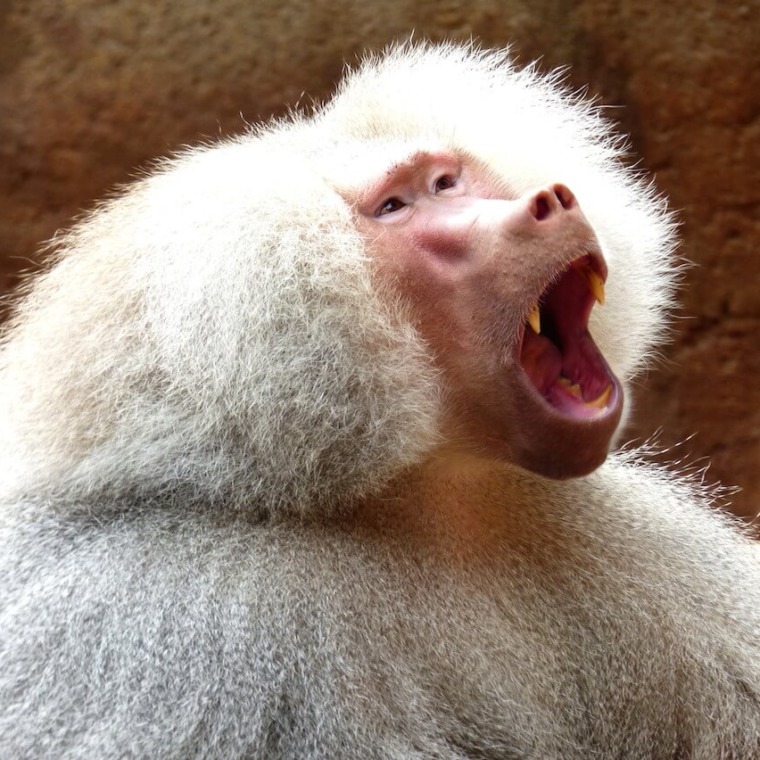
Sacred Baboons are common throughout northeastern Africa, but are extinct in the Nile region and Egypt, where they originally received their name and were worshiped by the ancient Egyptians.
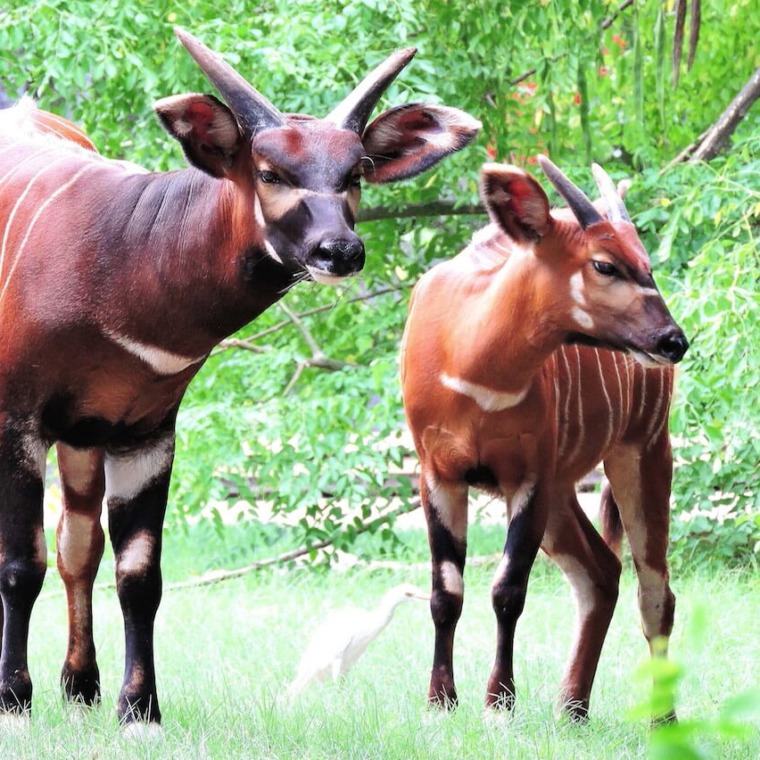
Bongo are most active at dawn and dusk, and often forage near the edges of wooded areas. They normally shy in the wild and flee into the forest for cover at the slightest provocation.
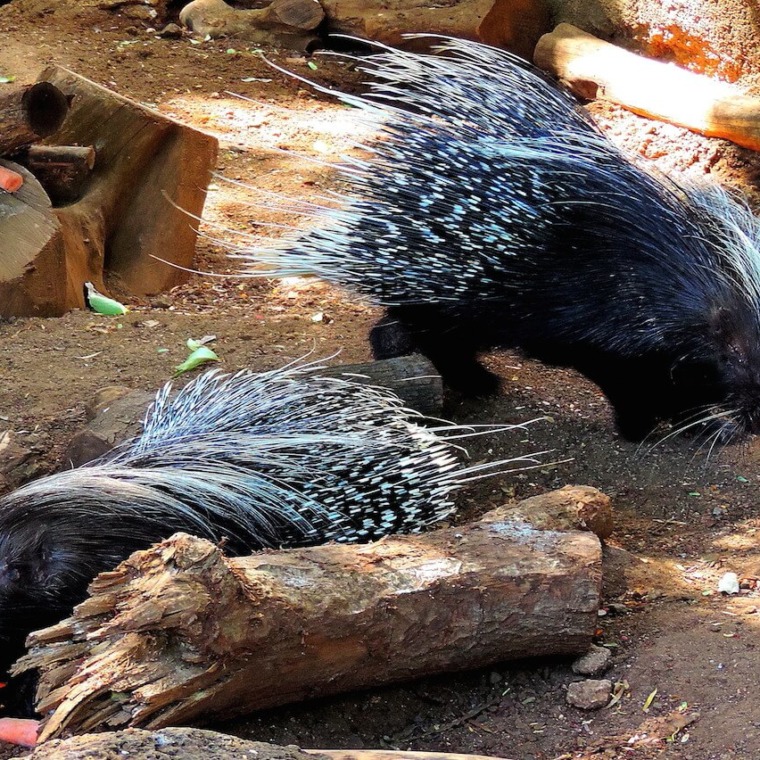
The North African crested porcupine is nocturnal. They are very adaptable and can be found in forests, on plantations, in rocky or mountainous areas as well as in deserts.
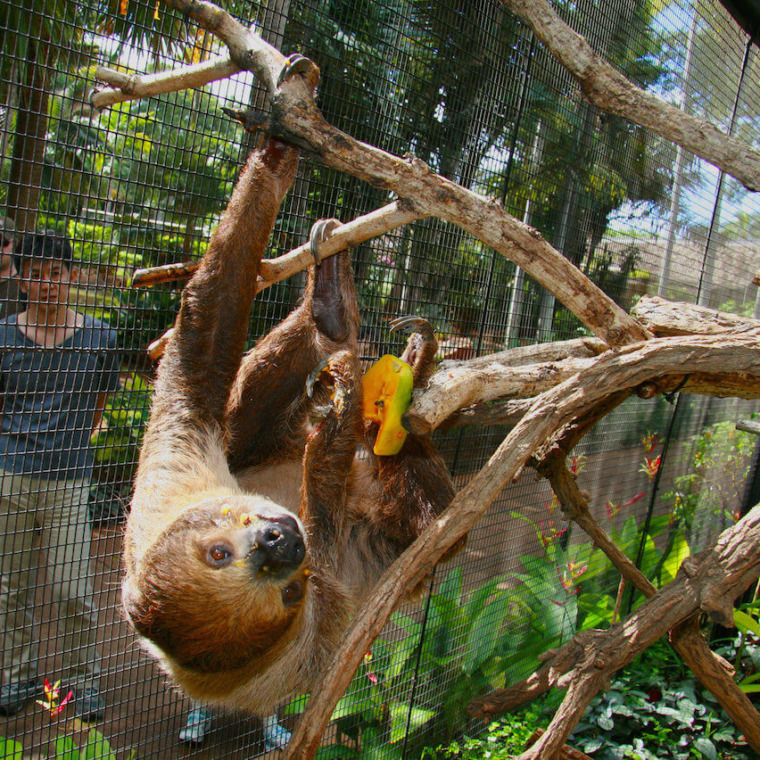
Sloths are found in Central and South America in the rain forest canopy. The Linne’s two-toed sloth is found in such countries as Nicaragua, Columbia, Venezuela, Surinam, Guyana, French Guiana, North Central Brazil, and Northern Peru.
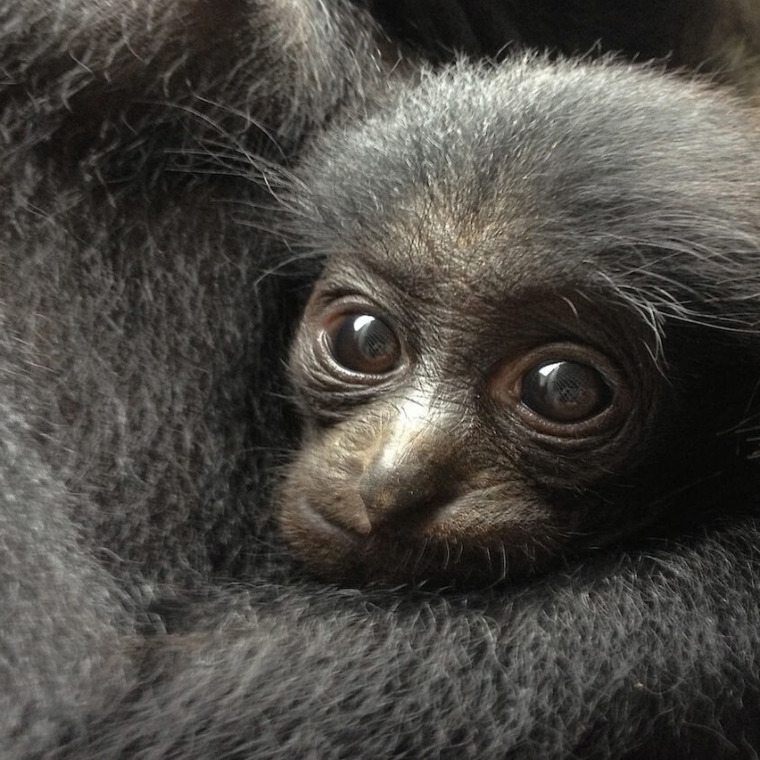
Siamangs range through southeastern Asia and are found in some numbers in the Malay Peninsula and Sumatra.


